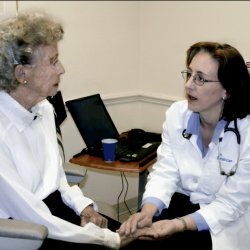Respiratory distress syndrome in adults
 Respiratory distress syndrome is a pathological condition, during pulmonary insufficiency, which manifests itself with special pulmonary changes. These can be the phenomena of pulmonary insufficiency, non-cardiogenic swelling of the lungs, collapse of the alveoli. Despite the differences in etiological symptoms, they affect the lungs, and at the same time cause damage to the structure of the lungs. The main symptom of the disease is hypoxemia. This is a condition where blood can not provide movement of oxygen.
Respiratory distress syndrome is a pathological condition, during pulmonary insufficiency, which manifests itself with special pulmonary changes. These can be the phenomena of pulmonary insufficiency, non-cardiogenic swelling of the lungs, collapse of the alveoli. Despite the differences in etiological symptoms, they affect the lungs, and at the same time cause damage to the structure of the lungs. The main symptom of the disease is hypoxemia. This is a condition where blood can not provide movement of oxygen.
Etiology of the respiratory distress syndrome
Common causes of the disease in adults are:
- pneumonia( viral, bacterial, fungal);
- sepsis,
- shock, pronounced and long-lasting( anaphylactic, septic and others)
- traumatic shock and trauma;
- pancreatitis;
- aspiration of water, stomach contents, water;
- inhalation of smoke, gases, toxic substances;
- fatty, airy, amniotic pulmonary embolism;
- venous fluid overload;
- use of apparatus for artificial circulation;
- severe metabolic disorders;
- autoimmune diseases;
- long exposure at high altitude.
The pathogenesis of respiratory distress syndrome in adults
The main cause of the disease is a violation of the alveolar and capillary barriers in the lungs. Under the influence of many etiological factors in interstitial lung tissue, pulmonary capillaries, many activated platelets and leukocytes are recruited. It is possible that they are allocated a very large number of active biological substances that damage the epithelium of the alveoli and vascular endothelium, alter the tone of the bronchial muscles, and the reactivity of the vessels, which stimulate the development of fibrosis. Then, as a result of the above processes, the epithelium of the alveoli and the endothelium of the capillaries of the lungs are damaged. There is a sharp increase in vascular permeability, spasms of the capillaries of the lungs, an increase in pressure in them. Atelectasis and pulmonary edema also develop. The disease is characterized by a decrease in lung volume, a decrease in lung compliance.
Pathomorphology of adult respiratory distress syndrome
The disease with respiratory distress syndrome usually develops from several hours to three days.
There are 3 pathomorphological phases of the disease: acute, subacute and chronic.
The duration of the acute phase of the disease lasts from 2 to 5 days. The phase is characterized by the development of pulmonary edema. The edematous fluid contains leukocytes, protein, erythrocytes. Together with edema, there is a lesion of the capillaries of the lungs and a pronounced violation of the alveolar epithelium. This damage leads to a disruption in the synthesis of the surfactant, which in turn can lead to the development of micro-teleclactases. If the course of the disease is favorable, then after a couple of days acute events subside, and the edematous fluid begins to dissolve. But in some unfavorable cases of the disease, it can go into subacute or chronic phase.
Subacute phase characteristics: interstitial and bronchoalveolar inflammation.
In the chronic phase of the disease develops fibrosing alveolitis. Finally, chronic pulmonary hypertension or chronic respiratory failure may develop.
Symptoms of the disease
Signs of the disease of respiratory distress syndrome in adults can often be slightly undetectable and for some time remain unnoticed. Common symptoms of the disease: dry cough, shortness of breath, a feeling of discomfort in the chest, the development of cyanosis.
There are 4 stages of the disease:
- The first stage is the stage of damage. Duration up to 6 hours after the disease. Usually, there are no complaints from the patient.
- The second stage is the stage of imaginary well-being. Duration from 6 to 12 hours after the onset of the disease. Symptoms: tachycardia, dyspnea, hard breathing, dry wheezes. The radiograph shows an increase in the vascular component in the lung pattern, and interstitial pulmonary edema is also observed.
- The third stage is the stage of respiratory failure. Duration from 12 to 24 hours. Symptoms: dyspnea, tachycardia, involvement of ancillary muscles during breathing, wet wheezing in the lungs, tachypnea, phenomena of cyanosis. The radiograph shows a bright interstitial edema.
- The fourth stage is the terminal stage. At this stage, the symptoms progress. There is hypoxemia, cardiovascular failure, a sharp decrease in blood pressure, the development of pulmonary edema.
Diagnosis of
The whole complex of radiological, clinical and laboratory studies is used to establish the correct diagnosis of respiratory distress syndrome. The doctor checks to see if breathing has been disturbed, the presence of severe shortness of breath, and whether there is any increasing rigidity in the chest. It is recommended radiography on which at first small darkening with fuzzy contours can be noted;And then a rise in the spot in all the pulmonary fields. The transparency of the lung tissue is reduced. It is also recommended to determine the gas composition of arterial blood. In this analysis, arterial hypoxemia, hypocapnia can be pronounced. The doctor measures blood pressure. EKG, general blood and urine tests, acid-base balance studies are also prescribed.
Treatment of respiratory distress syndrome in adults
Treatment of the disease must necessarily be comprehensive. The disease with respiratory distress syndrome is an urgent acute illness that requires urgent and immediate hospitalization, as well as the provision of qualified medical care. The first aid is breathing a special gas mixture, with a high oxygen content. Oxygen therapy should be carried out using nasal cannulae, rotonosa masks and artificial ventilation with intubation of the trachea. To normalize the volume of circulating blood, it is necessary to perform intravenous therapy with infusion solutions. The volume of solutions for intravenous administration during respiratory distress syndrome should be accurately calculated on the basis of laboratory and clinical data. Suspecting the infectious nature of the disease, a doctor may be prescribed antibacterial drugs that have a wide range of effects. Very often, the disease with respiratory distress syndrome is treated with hormonal drugs, especially in cases where the disease is a complication of the autoimmune process. To improve sputum discharge, mucolytic agents are prescribed. Also, the methods of physiotherapy - vibration massage - will be effective. Prevention of the disease of respiratory distress syndrome is to exclude the impact on the body of the factors leading to the disease.



